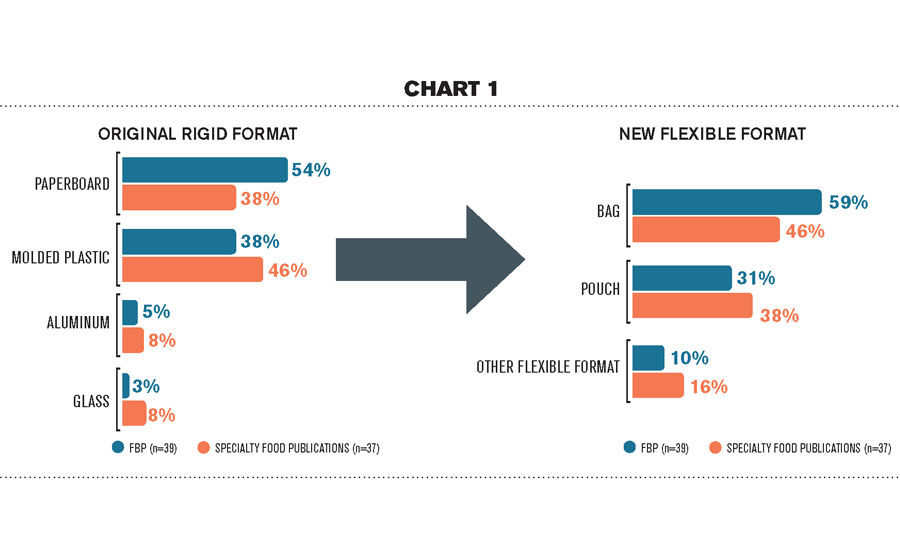Insight on rigid to flexible packaging changes

The shift from rigid to flexible packaging has been evident for some time now – and it’s only growing. In fact, at last June’s Global Pouch Forum in Miami, Dominic Cakebread, Smithers Pira packaging consultant, stated in a packaging trends and forecasts presentation that flexible packaging is poised to account for about a quarter of the global packaging market by the tail end of this decade.
But just what exactly is driving this shift from rigid to flexible? That was a question posed to 28,283 subscribers of BNP Media specialty food publications as well as Food & Beverage Packaging (now Packaging Strategies) in a recent study conducted by Flexible Packaging and BNP Media’s Market Research Division. The audience consisted of subscribers that either worked for a co-packer, CPG or packaging supplier that had changed formats within the past three years. The month-long study began on March 14, 2015.
Here are some highlights from the study:
- The majority of study participants stated that they switched from molded plastic or paperboard packaging to bags or pouches.
- Study participants cited cost savings as the biggest reason for switching from rigid packaging to flexible pouches or bags. Other factors noted in the switch included the ability to produce better looking and lighter weight packages, market demand, time savings, materials reduction, increased shelf life, and decreased shelf space.
- Most respondents stated that making the switch from rigid to flexible was either “somewhat difficult” or “not very difficult.”
- Respondents identified food products as the most popular products they’ve switched from rigid to flexible. Beverage, retail and agriculture were other identified markets.
The study is just one more indication of flexible’s rise in the packaging world. And with demand increasing both domestically and globally, it’s likely that more and more will follow suit.
